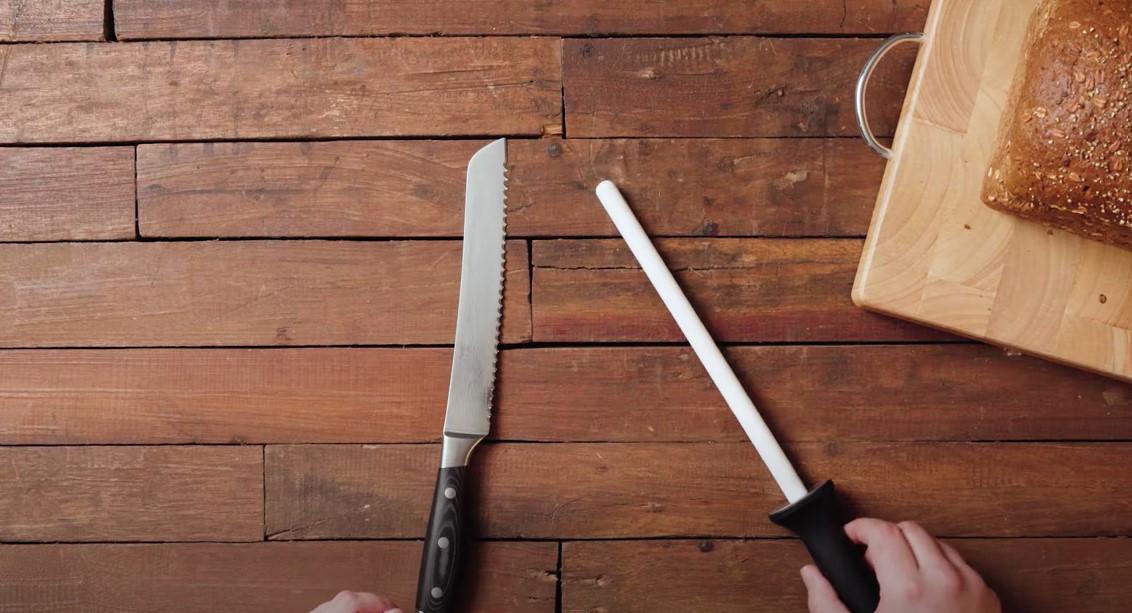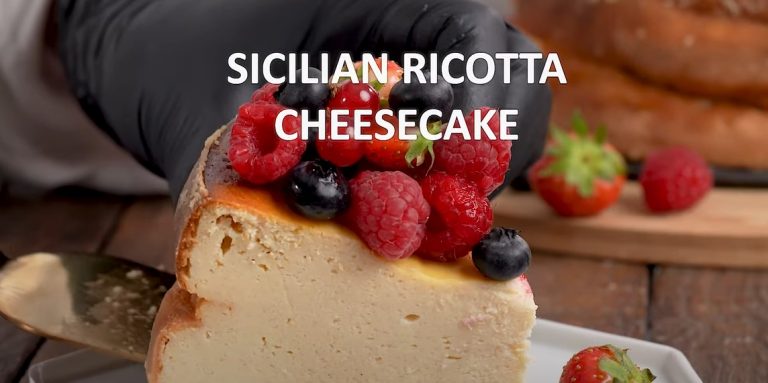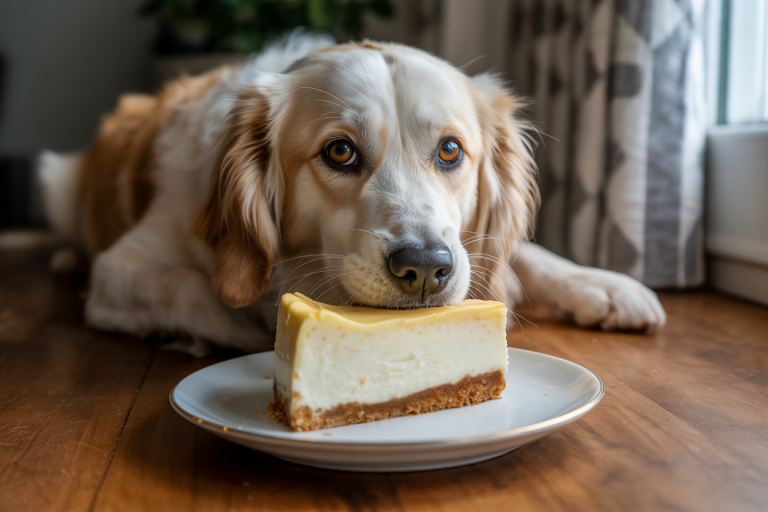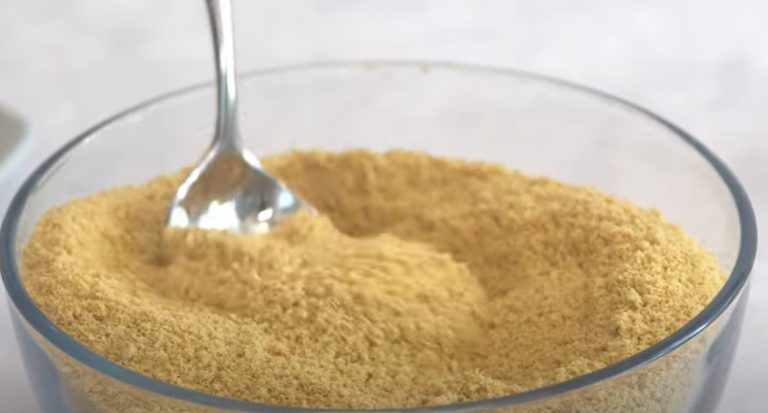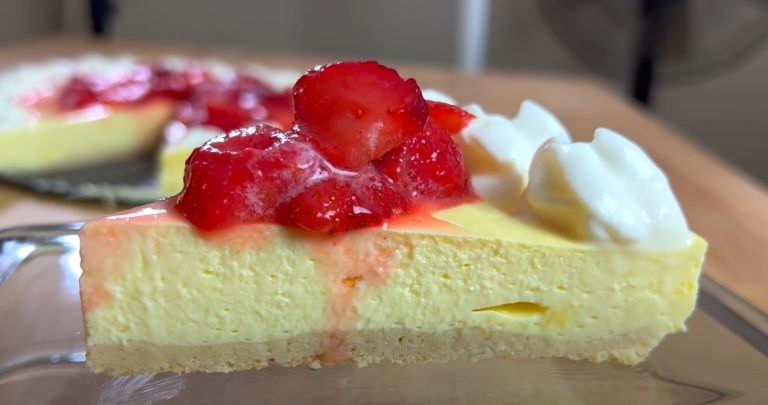How to Sharpen a Serrated Knife? Expert Techniques
How to sharpen a serrated knife? To sharpen a serrated knife, use a tapered ceramic or diamond sharpening rod. Match the rod to each serration’s angle, sliding it gently back and forth a few times. Focus on the beveled side only. Finish by lightly honing the flat side to remove burrs.
Many people face this challenge, often thinking that sharpening a serrated knife is a daunting task. But what if I told you that it’s simpler than you think? Imagine slicing through bread or tomatoes with ease, without squishing or tearing them apart.
You’ll discover the straightforward steps to make your serrated knife as good as new. Get ready to transform your kitchen experience and say goodbye to the frustration of dull blades. Keep reading, and you’ll soon master the art of sharpening your serrated knife with confidence.
How to Sharpen a Serrated Knife?
Choosing The Right Tools
Choosing the right tools to sharpen a serrated knife can make all the difference in achieving a razor-sharp edge. The process might seem daunting at first, especially with so many tools available, but with a little guidance, you’ll find it surprisingly straightforward. Let’s dive into the essentials of selecting the perfect sharpening tools for your serrated knife.
Understanding The Serrated Blade
Before you pick up any tool, it’s crucial to understand the anatomy of a serrated knife. Unlike a straight-edged knife, a serrated blade features a series of sharp teeth or points along its edge. These teeth require special attention during sharpening, as they can easily become damaged if the wrong tool is used.
The Importance Of A Serrated Knife Sharpener
Not all sharpeners are created equal. Standard flat sharpeners won’t work on serrated blades. You need a tool specifically designed to follow the grooves and ridges of your knife. A serrated knife sharpener, often a small rod, is perfect for this task.
Diamond Sharpening Rods
Diamond sharpening rods are among the most effective tools for honing a serrated knife. Their fine grit allows for precision sharpening without damaging the teeth. When using a diamond rod, slide it through each groove, maintaining the angle of the serrations.
Ceramic Sharpening Rods
Ceramic rods are another excellent choice for serrated knives. They’re less abrasive than diamond rods, which means they’re gentler on the knife. If you’re worried about maintaining the integrity of your knife, ceramic rods offer a safe and effective option.
Manual Sharpeners With Guided Slots
Some manual sharpeners come with guided slots specifically for serrated edges. These slots help maintain the correct angle, making the process easier for beginners. While they may not offer the precision of a rod, they’re a convenient option for quick touch-ups.
Electric Sharpeners For Serrated Blades
Electric sharpeners can also be used, but caution is key. Look for models with a dedicated serrated setting. They offer speed and convenience but can be harsh if not used correctly. Always read the instructions carefully to avoid damaging your knife.
Have you ever found yourself frustrated with a dull serrated knife, unsure of how to bring back its original sharpness? With the right tools, you can ensure your serrated knives remain as effective as the day you bought them. Take the time to choose the right tool for your needs, and sharpening will become a rewarding task rather than a chore.
Identifying Serrated Knife Types
Sharpening serrated knives involves identifying the type of serration. Scalloped, pointed, or micro-serrated edges each require specific techniques. Use a ceramic rod or sharpening tool to maintain the blade’s effectiveness. Keep strokes gentle to preserve the knife’s unique design.
Identifying the type of serrated knife you own is crucial before attempting to sharpen it. Different serrated knives have unique tooth patterns, and using the wrong sharpening method can damage your knife instead of restoring it. Knowing your knife type can also help you choose the right sharpening tool and technique, ensuring you maintain the knife’s functionality and longevity.
Understanding Common Serrated Knife Types
Serrated knives aren’t all the same. Some have large, widely spaced teeth, while others feature small, closely packed serrations. The bread knife is a classic example with its large teeth designed for slicing through crusty loaves without crushing them. On the other hand, a tomato knife often has smaller serrations to smoothly cut through delicate tomato skin.
Spotting The Difference Between Single And Double Bevels
Serrated knives can have either a single or double bevel. The single bevel knife is sharpened on one side, making it ideal for clean cuts on soft foods. The double bevel knife, sharpened on both sides, is more versatile for various kitchen tasks. To figure out which you have, look closely at the knife’s edge, or gently run your finger along it to feel the bevel.
Recognizing Custom Serration Patterns
Some knives come with custom serration patterns, designed for specific cutting tasks. Brands often create unique styles to differentiate their products. A steak knife might have a unique pattern to cut through meat efficiently. When sharpening, replicating this pattern is key to maintaining the knife’s original performance. Take note of any unique features your knife may have.
Why Identifying Your Knife Type Matters
Understanding your knife type isn’t just for sharpening; it helps you use the knife correctly in your daily cooking. Using a bread knife for slicing tomatoes might not give you the best results. Knowing your knife’s specific purpose can enhance your culinary skills. Next time you reach for a serrated knife, think about its design and intended use. Have you ever tried sharpening a serrated knife without knowing its type? What challenges did you face? Share your experiences in the comments below!
Preparing For Sharpening
Before sharpening a serrated knife, proper preparation is essential. This ensures safety and effectiveness. Preparing involves gathering tools and setting up a workspace. Each step is crucial to achieve a sharp edge.
Gather The Right Tools
Start by collecting the necessary tools. You will need a sharpening rod. It’s designed for serrated edges. Choose a rod that fits the knife’s serrations. A honing oil is also helpful. It reduces friction during sharpening. A clean cloth or towel will be useful too.
Set Up A Safe Workspace
Create a safe area for sharpening. Ensure the surface is stable. This prevents slipping. Use a non-slip mat if needed. Keep the area well-lit. Good lighting helps you see the serrations clearly. Remove any clutter nearby. A clean space reduces accidents.
Inspect The Knife
Examine the knife carefully. Look for any damage or deep notches. This will guide your sharpening process. Check the handle for stability. A loose handle can be dangerous. Make sure the knife is clean before starting. Dirt can interfere with sharpening.
Understand The Serration Pattern
Serrated knives have unique patterns. Each knife may differ slightly. Identify the type of serration on your knife. This helps choose the right sharpening technique. Understanding the pattern improves precision. It ensures each serration is properly sharpened.
Sharpening Techniques
Serrated knives need special care for sharpening. Use a ceramic honing rod to gently sharpen each serration. Ensure even strokes to maintain sharp edges without damaging the blade.
Sharpening serrated knives might seem intimidating, but it’s an essential skill every kitchen enthusiast should master. These knives often get overlooked in the sharpening routine, but a well-honed serrated knife can make a world of difference in your culinary tasks. Imagine effortlessly slicing through a loaf of fresh bread without squashing it or smoothly cutting juicy tomatoes without tearing the skin. Let’s dive into sharpening techniques that can bring your serrated knife back to life.
Understanding The Serrated Edge
Before you start sharpening, it’s crucial to understand the anatomy of a serrated edge. Unlike regular knives, a serrated knife features a series of teeth or grooves. Each tooth needs specific attention when sharpening. Think of it as giving each tooth a mini makeover to restore its cutting power.
Manual Sharpening Tools
One effective tool for sharpening serrated knives is a ceramic sharpening rod. These rods are designed to fit into the grooves of a serrated blade. Hold the rod at an angle that matches the bevel of the serrations and gently swipe it along each groove. This technique allows you to sharpen one tooth at a time.
Electric Sharpeners
If manual sharpening feels daunting, consider using an electric knife sharpener. Many modern models come with settings specifically for serrated blades. Make sure your sharpener is compatible with serrated knives, and follow the manufacturer’s instructions. This tool can save time and effort, but always check the results to ensure each tooth is sharpened.
Using A Whetstone
While less common, a whetstone can be used for serrated knives. It’s more challenging due to the knife’s unique shape, but not impossible. Focus on the flat side of the blade first, then carefully work on the serrations. It’s not about perfection but ensuring each tooth is adequately sharpened.
Regular Maintenance
After sharpening, regular maintenance is key. Keep your knives clean and dry after each use to prevent rust and dullness. Consider investing in a knife sleeve to protect the edge. A small effort in maintenance can dramatically extend the life of your sharpened serrated knife. Sharpening your serrated knife is more than a chore; it’s a gateway to effortless food preparation. Have you ever tried slicing a ripe tomato with a dull knife? It’s frustrating, isn’t it? With these sharpening techniques, you can transform your kitchen experience. Which method will you try first?
Maintaining Sharpness
Maintaining the sharpness of a serrated knife is essential. A sharp knife ensures clean cuts and lasts longer. Without proper care, even the best knives can become dull. Regular maintenance can keep your knife in top condition.
Understanding Serrated Edges
Serrated knives have unique edges. They feature small, pointed teeth. These teeth help cut through tough materials easily. Understanding these edges is key to maintaining sharpness.
Regular Inspection
Inspect your knife regularly. Check for dullness or damage. Use a magnifying glass for a closer look. Regular inspection helps catch issues early. Early detection means easier maintenance.
Proper Storage
Store your knife carefully. Avoid tossing it in a drawer. Use a knife block or magnetic strip. Proper storage prevents accidental dulling. It also protects the knife’s edge.
Using A Sharpening Tool
Use a sharpening tool for serrated knives. A ceramic rod works best. Move it slowly along each serration. This restores the knife’s sharpness. Consistent sharpening keeps the edge keen.
Cleaning After Use
Clean your knife after each use. Use warm, soapy water. Dry it thoroughly to prevent rust. A clean knife stays sharper longer. Avoid using abrasive cleaners.
Avoiding Hard Surfaces
Cut on soft surfaces. Avoid cutting on glass or stone. These surfaces can dull the knife quickly. Use wooden or plastic cutting boards instead. They are gentler on the blade.
Professional Sharpening Services
Consider professional sharpening services. Experts can restore a knife’s edge. It’s a great option for heavily used knives. Professional services ensure precise sharpening.
Frequently Asked Questions
How Often Should You Sharpen A Serrated Knife?
Sharpen a serrated knife once or twice a year. Frequency depends on usage. Less frequent sharpening maintains blade longevity.
Can You Use A Regular Sharpener For Serrated Knives?
No, regular sharpeners are unsuitable. Use a serrated knife sharpener or sharpening rod. These tools fit blade grooves.
Is It Difficult To Sharpen A Serrated Knife?
Sharpening serrated knives is not difficult. It requires patience and precision. Follow step-by-step instructions for best results.
Conclusion
Sharpening a serrated knife seems tricky, but it’s manageable. Start with understanding the blade’s design. Use a sharpening tool that suits the knife’s grooves. Consistency matters. Be careful, and take your time. It’s essential for safety and precision. Regular maintenance keeps your knife effective.
Sharp knives make cooking easier and more enjoyable. Practice helps you get better at sharpening. Feel confident with each step. Remember, a sharp knife is a safe knife. Keep your tools in good condition. Sharpening skills grow with experience. Embrace the process for better results.
Related Article

